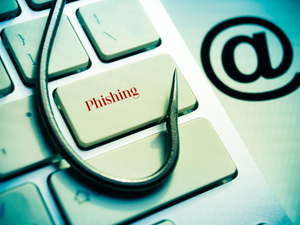
What Every CEO Needs to Know About the Latest Phishing Attempts
 As a CEO or business owner, you constantly balance multiple priorities to ensure your organization’s success and security. But what if I told you that your company could be just one phone call away from a major cybersecurity breach? A new wave of sophisticated phishing attacks is targeting businesses across the United States, and it’s more dangerous than ever.
As a CEO or business owner, you constantly balance multiple priorities to ensure your organization’s success and security. But what if I told you that your company could be just one phone call away from a major cybersecurity breach? A new wave of sophisticated phishing attacks is targeting businesses across the United States, and it’s more dangerous than ever.
The New Face of Phishing: Vishing Attacks on the Rise
Imagine this scenario: One of your employees receives a call on their cell phone. The caller claims to be from your IT department, saying there’s an issue with their VPN login and offering to help resolve it. Trusting that they’re speaking with legitimate support, the employee follows the caller’s instructions, clicks on a link sent via SMS, and logs into what appears to be your company’s VPN portal.
What they don’t realize is that they’ve just handed over their credentials to a cybercriminal.
This is the reality of the latest phishing and vishing (voice phishing) campaign, which has already targeted over 130 organizations in the US. The attackers are using highly effective social engineering tactics to trick employees into revealing their VPN credentials, gaining full access to corporate networks. Once inside, they can deploy ransomware, steal sensitive data, and cause significant operational disruption.
Why This Threat Is Different—and More Dangerous
Phishing isn’t new, but this approach is particularly alarming. The attackers aren’t just sending generic emails hoping to catch someone off guard; they’re taking the time to impersonate IT staff, using personal phone calls to establish trust and create a sense of urgency. They even mimic legitimate VPN login pages, making it nearly impossible for an unsuspecting employee to spot the scam.
Once they have the credentials, the attackers immediately begin scanning for vulnerable systems, establishing persistence, and escalating their access within the network. Their ultimate goal is to wreak havoc on your operations—whether by stealing valuable data, destroying backups, or demanding a ransom.
What You Can Do to Protect Your Business
As the leader of your organization, it’s essential to take proactive steps to safeguard your network against these sophisticated attacks. Here’s what you can do:
Educate Your Employees
The first line of defense against phishing attacks is your employees. Ensure they are aware of the risks and know how to recognize phishing and vishing attempts. Regular training sessions can make a significant difference.
Review VPN Logs
Regularly monitor your VPN logs for any unusual activity, particularly from IP addresses that don’t match your typical usage patterns. If anything seems suspicious, investigate it thoroughly.
Strengthen Your IT Policies
Consider implementing stricter IT policies, such as requiring employees to verify the identity of anyone claiming to be from IT before taking any action. Encourage them to report any suspicious calls or emails immediately.
Use Multi-Factor Authentication (MFA)
While MFA isn’t foolproof, it adds an extra layer of security that can make it more difficult for attackers to gain access, even if they have stolen login credentials.
Foster a Culture of Vigilance
Create an environment where employees feel empowered to question anything that seems off. Encourage a culture of vigilance, where cybersecurity is a shared responsibility.
Don’t Wait Until It’s Too Late
The consequences of a successful phishing attack can be devastating for any business. By taking the right steps now, you can significantly reduce your risk and protect your organization from becoming the next victim.
Remember, cybersecurity isn’t just an IT issue—it’s a business issue. As a CEO, it’s up to you to lead the charge in keeping your company safe.
If you’re unsure where to start or need assistance in strengthening your cybersecurity posture, consider reaching out to a trusted Managed IT Services Provider who can help guide you through the process.
Protect your business. Protect your future.
